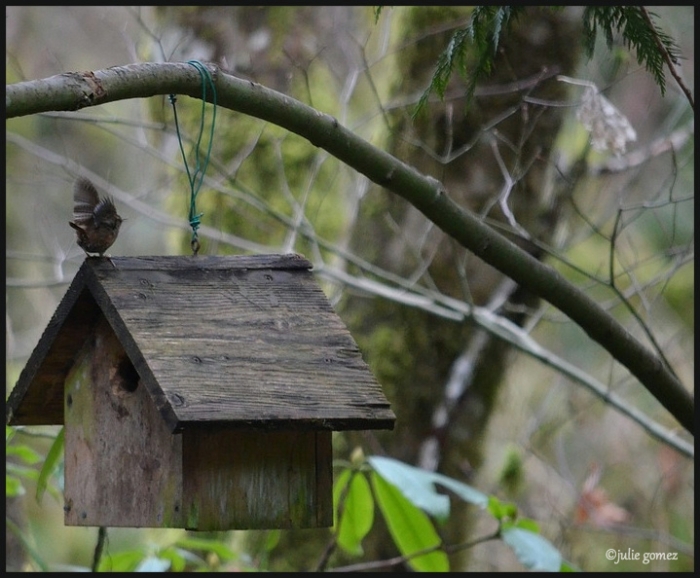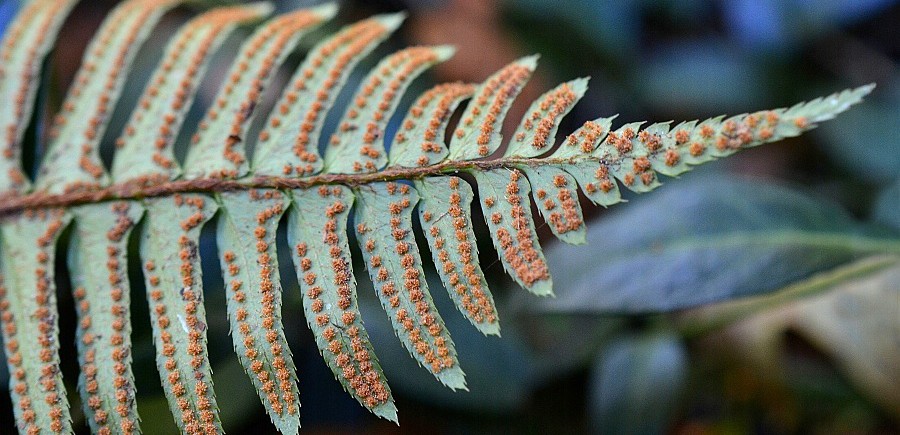
Be as a bird perched on a frail branch that she feels bending beneath her, still she sings away all the same, knowing she has wings.
—Victor Hugo (1802-1885)
🌿 🌿 🌿
The little wren of the West that was once called the winter wren (Troglodytes hiemalis) is now the Pacific wren (Troglodytes pacificus). The change happened in 2010 when it was found that the winter wren that lives in the east, and the Pacific wren that lives in the West had different vocabularies and genetics. So they now are a separate species.
There is much to enjoy about this high energy, inquisitive little wren. His song is especially intriguing—a lasting, melodious tune that boasts such energy it’s hard to believe such a tiny bird sings it. I am fortunate to share the same forest as the Pacific wren; a bird that doesn’t migrate, and that gives me the pleasure of hearing his song. Much of the time, he sings from a low perch several feet from the ground; a song that is sung bold and bright, rain or shine. The other morning I had the good fortune of his company when he perched outside my study window in the forsythia shrub. There, he burst into song—a rapid succession of trills and warbles that went on for ten minutes. Each song lasted about twelve seconds with hardly a pause in between. I should add that while the Pacific wren sings year-round, his best song is sung in late winter and spring. Mornings and evenings are best.

When the Pacific wren isn’t singing, he is probably hunting. During our February deep freeze that brought snow, ice, and dangerous wind chills to the mountains, bird activity spiked—something that is not uncommon during inclement weather. Woodpeckers and chickadees mobbed the suet feeders, while the varied thrushes, jays, juncos, towhees and song sparrows rushed the seed feeders. Feeders that would require several refills throughout the day along with some added peanut protein, and some bread scrap carbs before sundown. Outside, the wind blew in gusts. The air was dry, and the snow whirled like bits of Styrofoam.
When it came time to refill the bird feeders, I opened the door, and the birds scattered, fleeing for their lives! As they hid in the fern glades underneath veils of snow, one bird remained it was the Pacific wren. Setting seed pans aside, I raised my camera, and with numbing hands, tried to get a bead on the little bird, but failed. His movements were simply too quick. Defeated, cold, and a little frustrated, I emptied the seed pans, and retreated back to the warmth of the house.
The birds quickly returned, but the Pacific wren was gone. He was gone because birdseed simply didn’t interest him. What he wanted was protein, and knew exactly where to find it. The hunt took him to the woods beyond the front porch where he perched on a scrawny twig that poked out of the snow. There he sat, wind and snow swirling around him as he plotted his hunting route. Quietly, I stepped outside, not to photograph, but to observe, and this is what I saw.
The Pacific wren flew from his perch to the basket hanging from the porch. The basket held wild licorice ferns, their fronds curled like clenched fists against the cold. He combed through the fronds and found a bug or two. Next, he flitted over to the window boxes where he scored a few more bugs. His search then led him to the house eaves and to inspect the door frame where he struck out. He then went straight for the corn fiber whisk broom hanging on the post where spiders often hide between the bristles, but again, he struck out. Lastly, he came to the large flowerpot that stood next to the front door. The inside must have seemed like a cave to such a small bird, but since his scientific name means “cave dweller” such deep dark places don’t faze him. At its bottom he found a feast not to be believed. Spider eggs! Egg sacs the size of peas belonging to the house spider. A delicacy. The Pacific wren had hit pay dirt!
____________________
Additional information about the Pacific wren
From the tip of its tiny, insect-catching beak, to the tip of its stubby, upright tail, the Pacific wren measures 4 to 4 ½ inches long, which makes it smaller than a chickadee. Males and females look the same. The eyebrows are slender, and cream-colored. The body is dark brown with barred wings, breast, belly, flanks, and tail. The Pacific wren spends much of its life on and close to the ground where it darts in and out of the vegetation as if on fast-forward. Its quick, mouse-like movements have earned it the nickname “mouse bird.” At times, the Pacific wren has even fooled me into thinking I’ve seen a mouse! It builds its nest in mossy hummocks, the root wads of fallen trees, as well as live tree roots, in and underneath tree stumps, abandoned woodpecker holes, and stony crevices. The inconspicuous nest, with side entrance, is constructed of mosses, roots, grasses, feathers, and hair, and cradles 4 to 7 eggs with reddish-brown flecks.
____________________
Copyright 2014. All rights reserved.
🌿Thank you for reading Nature Chronicles.

Lovely story, Julie. Wrens are birds that I rarely see — or even hear. Lucky you!
Thank you, Thad. They are delightful. Because of their size, I tend to hear them more than I see them, but I’ll take what I can get! 😊